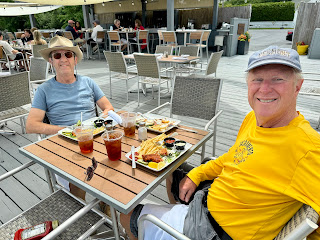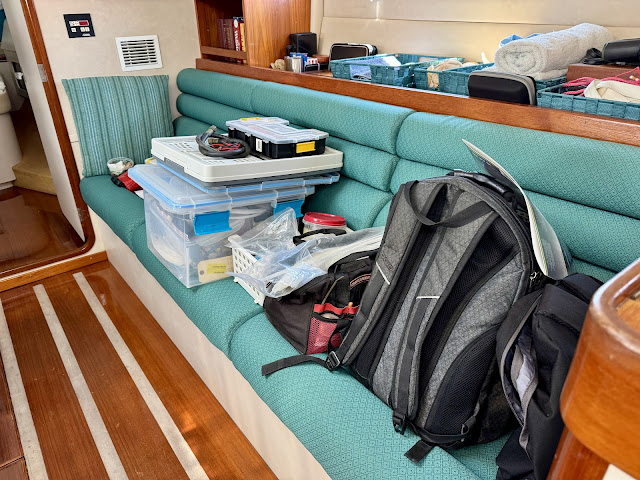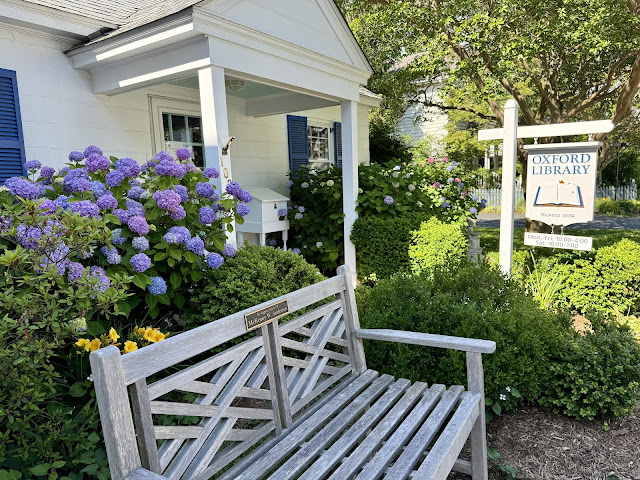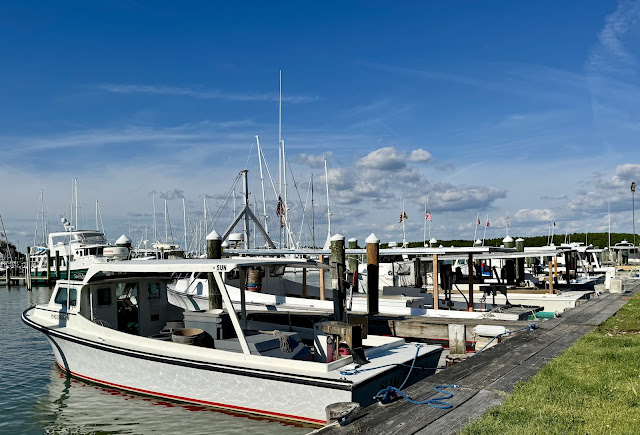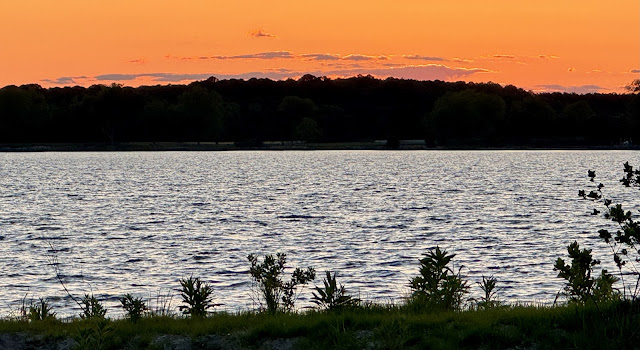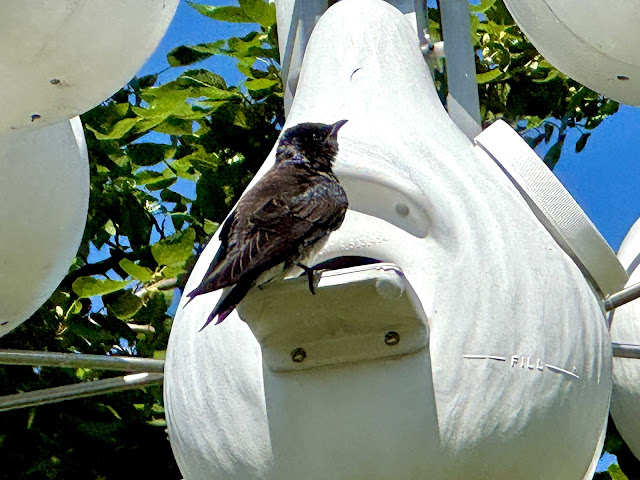Currently, an inspection of the new batteries and the electrical connections is scheduled for Tuesday, May 27, and the survey for insurance is booked for Wednesday. Rain is predicted Monday through Sunday of next week, but we hope to leave on Thursday if possible. It is 700 nautical miles to Marblehead, Massachusetts, where we are scheduled to to take a U.S. Sailing hands-on safety at sea course on June 7.
Yesterday was gloomy and quite windy. After a brief walk around town, I worked on registering our new rescue beacons, including a new Emergency Position Indicating Radio Beacon (EPIRB) and personal locator beacons (PLBs) with the relevant authorities, which took a few hours. Among other tasks, Peter reconnected the single sideband radio, which required rewiring, re-securing and soldering since the riggers had cut the wire when the backstay was removed two years ago.
As we were working on documentation down below, there was a knock on the hull, and we were delighted to find Bill and Rosemary Thomas on the dock. They owned a 60-ft. Sundeer for 16 years and cruised around the world. (We own a 56-ft. Sundeer.) We last encountered them in Mobjack Bay in the southern Chesapeake Bay a few years ago, when they still had their Sundeer. Now, they have gone to the dark side and are owners of an enormous 57-ft. Nordhavn trawler. They invited us over for drinks and dinner in the evening.
Peter realized that the boat yard shop would be closing soon and rushed up the dock to pick up packages. The store was already closed, but Peter spied a FedEx truck getting ready to pull away and flagged down the driver. This was fortunate, because the truck contained our new life raft, which we need to have on board before inspection. The driver used his dolly to move the palette with the big box on top to the dock by the stern of our boat.
We enjoyed a lovely evening with Bill and Rosemary and their long-time friends Bert and Pat, who sailed in from Baltimore on a Beneteau, all of us exchanging amusing stories of being on the water. As the sun was setting, it was time to leave. Bill and Bert offered to help get the life raft on board, an offer we could not refuse because it is a bit unwieldy in size. I untied the lines securing the old one while the three men adjusted dock lines to get the stern as close as possible to the dock. Then we lowered the outer frame for the life raft and made the switch. I am pretty sure we could not have accomplished this task, at least not in such a short time, without them. But it is just an example of how boaters help each other without a second thought.
 |
| Bill, Peter and Bert adjusting lines |
 |
| Peter securing the new life raft |
After two glasses of wine, I was ready to go to bed, and Peter and I both retired early (10ish). He was up before 6 a.m., as usual, while I slept for over 9 hours, as usual. This morning and into the afternoon, he worked on attacking the "critical mess" on the nav table and elsewhere. After taking care of a couple small things on the boat, I left to go to the post office to pick up packages, to look at the quilt exhibit of antique American quilts at the Oxford Museum, and to download and use the free historic walking guide of the town. Along the Strand, I watched the little Optimists from the yacht club racing on the river.
 |
| Optomists racing on the Tred Avon |
When I arrived at the museum after stopping in the post office, I took photographs of just some of some the many quilts and other items.
 |
| State Flower Quilt, 1945 |
 |
| Detail of a crazy quilt |
 |
| Maryland Mathematical Quilt, 1830-40 |
 |
| Easter Bunny baby quilt, 1940 |
 |
| Square within a Square Quilt, 1870-80 |
 |
| Quilting and other tools and a cross-stitcheed pillow, 1881 |
 |
| Red Rhapsody Quilt, 1895 |
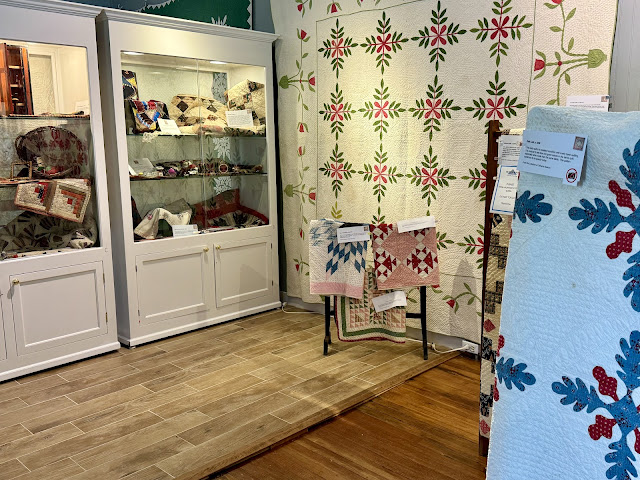 |
| Part of the Fabric of History: Antique American Quilts at the Oxford Museum |
 |
| Signature on a quilt made by different people in Oxford |
 |
| Hubert Ver Mehren Dalia quilt, 1935 |
 |
| Detail, crazy quilt, 1893 |
 |
| Crazy quilt, 1893 |
 |
| Great Aunt Minnie's crazy quilt, 1920 |
 |
| Detail, Laural Leaf quilt, 1850-60 |
 |
| Brickerville Oak Leaf and Reel Quilt, 1850 |
Then I downloaded the guided tour and begin strolling and listening to history. The area was settled by English colonists in the 1660's, centuries after the local indigenous people, the Choptanks, started using this small peninsula of land by the mouth of the Tred Avon River. In 1670, the plan for streets in a grid pattern was created, although development was slow. The lovely town park between Morris Street (the main street) and the Tred Avon was the original marketplace. On the north side of this former market, starting in the 1800's, white children attended the long gone elementary and high school. Churches, houses and other buildings surrounded the marketplace in the 1800's. The brick sidewalks still existing along Morris and other streets trace their origins to pre-Revolutionary times.
The most grand old house in Oxford is the Bratt Mansion, also known as Academy House. It was built in 1847 by General Tench Tilghman, a great-grandson of Lt. Col. Tench Tilghman, who was one of George Washington's aides-de-camp in the Revolutionary War. After this war, with trade with England diminished, Oxford declined from a thriving port rivaling Annapolis to a town of fewer than 100 people. To help re-build the town, Gen. Tilghman started the Maryland Military Academy here. The mansion was the officers' quarters, with facilities for cadets beside it. On September 13, 1855, the young men were smoking, which was against the rules, and burned down the dormitories and classrooms, and the school was not rebuilt.
 |
| The Bratt Mansion |
Across the street is the Barnaby House, built in 1770 by Richard Barnaby, a sea captain. It is one of only four late-eighteenth century buildings remaining in Oxford and the only one on its original foundation. and 95% of its original structure is intact.
 |
| Barnaby House |
Nearby is the former post office and home of Molly Stewart, who served as postmistress for 63 years. She was the first female postmistress in the U.S. She was just 18 years old when she succeeded her father in 1877. Her story is quite fascinating. In 1928, Republican Senator Phillips Goldsborough was elected and, in appreciation for his financial and other support, George Dawson of Oxford was appointed postmaster by Goldsborough. Not wanting to give up her job, Miss Molly took the train to Washington, D.C. and went to the Senate to appeal the appointment, insisting on a civil service exam. Several people, including Miss Molly and Dawson, sat for the exam; she received the highest score, and Dawson failed the test. Senator Goldsborough called for another exam in a year and allowed her to be the interim postmistress. A year later, she again earned the highest score, but Dawson also passed. However, the other Senator from Maryland, a Democrat, rallied behind her, saying he would vote against Dawson's appointment and contacting newspapers nationwide, letting them know that the Republicans were trying to deprive an old woman of her job and livelihood. His efforts were successful, and she remained on the job until 1940.
 |
| The Molly Stewart House and former Post Office |
The Grapevine House remains much the same as when it was constructed in 1798 by two brothers, one a sea captain. Capt. William Willis was returning from France and stopped at the Channel Islands of Guernsey and Jersey. While there, he took cuttings from local grapevines and stuck them in potatoes to keep them alive for the Atlantic crossing. One perished, but the others thrived in the soil in front of the house. By the 1850's, the grapevine had a circumference of 45 inches and went all the way around the house, making it one of the largest in the world. It is reported that one year, it produced 24,500 bunches of grapes. Today, there is a small section remaining by the walkway to the house.
 |
| Grapevine House |
James Stewart from Scotland built the Stewart House in 1790 from the timbers of old ships. The house faced away from the water to eliminate the impact of the strong winds that sweep over the Strand. The house was enlarged over time. Members of the Stewart family lived there from 1790 until 2006; Erma Stewart, a teacher in Oxford, lived in this home for 100 years.
 |
| The Stewart House |
Across the Strand from the Stewart House is a replica of a small customs house. Captain Jeremiah Banning was the first federal customs officer in Oxford, appointed by President Washington. He owned a plantation, The Isthmus, across the river. Banning built the customs house on his land for his convenience. If boats docked on the Oxford side of the Tred Avon, he would have a servant row him across to check the cargo.
All along the Strand, docks accommodated large ships for cargo and passengers, and commercial buildings, not homes, faced the waterfront. But, at the point where the L-shaped peninsula bends, sits the Sandaway Suites Inn, the main building of which is the home of a wealthy Philadelphian Col. Samuel Wetherell Sr., built between 1873 and 1876. He planted spectacular gardens and specimen trees that still dominate the landscape.
 |
| The Wetherill House and Gardens, now part of the Sandaway Suites |
The Robert Morris Inn, at the corner of North Morris Street and the Strand, had its beginning in the early 18th century, as the small office and possibly home of Robert Morris Sr., who arrived in Oxford in 1738 to manage the affairs of Foster, Cunliffe and Sons, a powerful British mercantile firm based in Liverpool, England. A brilliant trader, he made a fortune for his firm and for himself and is credited with reviving the town's economy. Local dried tobacco filled the holds of outgoing ships, while incoming vessels brought a wide variety of manufactured goods and luxury items.
 |
| The Robert Morris Inn |
There are more stops on the tour, but I decided to return to the boat and see more tomorrow. Peter has been working on installing a new bilge pump in the forepeak, and I had to help him for a while. It's getting late now and I should think about dinner before sunset.


